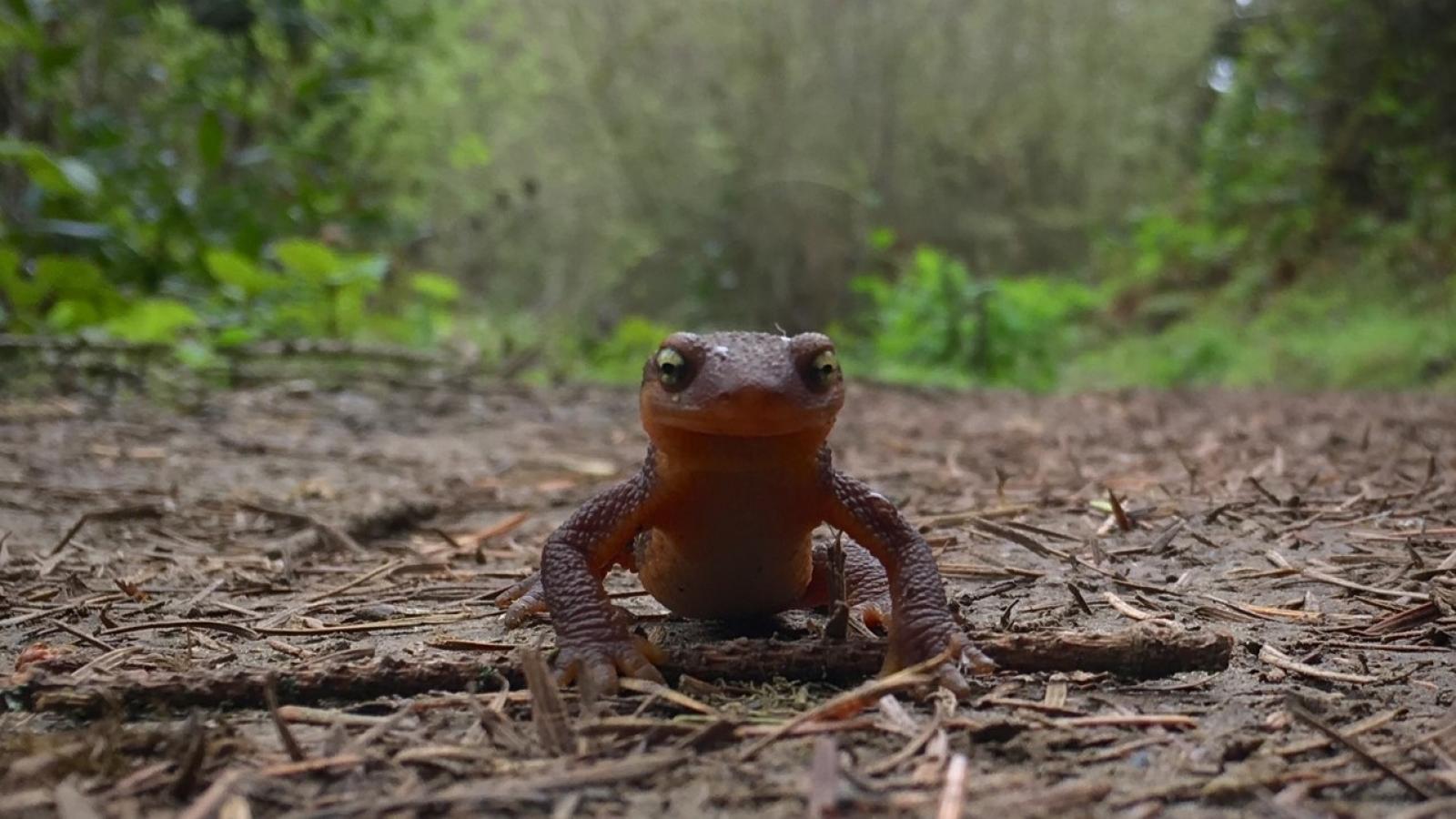How Newts and Garter Snakes Are Locked in an Evolutionary Arms Race
As you walk along the trail this rainy season, you might find someone cute walking alongside you: a newt! The Bay Area is inhabited by three species of newt — the California newt (Taricha torosa), the rough-skinned newt (Taricha granulosa) and the red-bellied newt (Taricha rivularis) — which are collectively referred to as Pacific newts. The best time to see one of these critters is after a rain or heavy fog, when they migrate toward bodies of water to breed. During the breeding season, the male newts change into an aquatic form which includes a broad, paddle-like tail that allows them to swim better as they mate.
The California newt and the rough-skinned newt are by far the most common newts and are very hard to distinguish from one another. They can be told apart by their slightly different head shape and the presence (or absence) of a stripe on the larvae (young aquatic newts). Visit our newt page, where you can learn more about how to distinguish these two commonly encountered species.
Newts in the genus Taricha contain tetrodotoxin, the same toxin found in pufferfish. This toxin can be fatal to humans and has a potency more than 1,000 times greater than that of cyanide. Though these animals are adorable, it is best practice to leave them undisturbed as they wander, not only for their health but also for yours.
Why would any animal need to be so toxic? The answer is an evolutionary arms race between common garter snakes (Thamnophis sirtalis) and newts. Garter snakes are one of the few animals that have evolved a resistance to the tetrodotoxin, that can digest the newt with limited effects. As garter snakes grow more resistant to tetrodotoxin, only the most poisonous newts survive, which leads to the whole population of newts evolving to be more toxic. Then, as the newts become more toxic, only the most resistant snakes can safely digest them, which leads to the whole population of snakes evolving to be more resistant. This constant back and forth leads to super resistant snakes, and super toxic newts.

